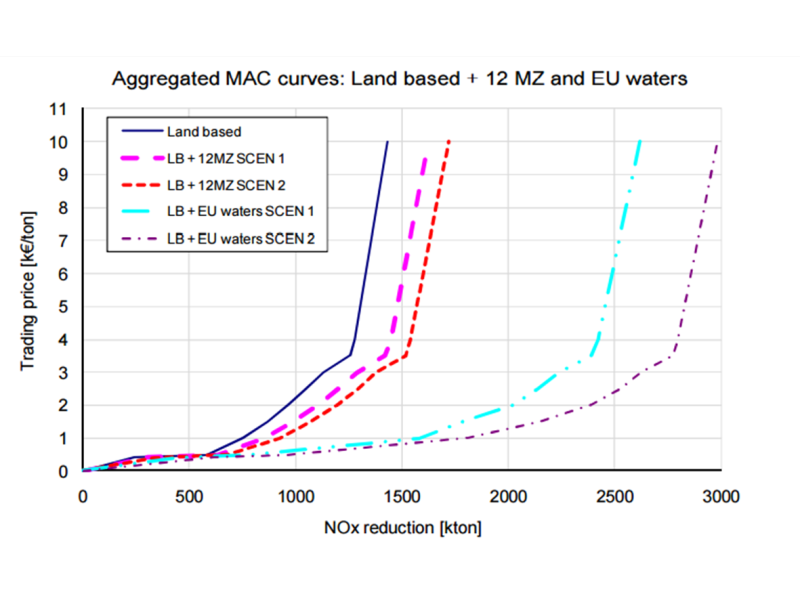Market-based instruments for reducing air pollution
08.31
From 2009 to 2010
TML investigated the legal feasibility and impact of incorporating SOx and NOx marine emissions into EU emissions trading. The team built a database for these emissions and produced detailed cost curves for emission reductions.
The European Commission wishes to halt the fast-growing share of maritime emissions in total SOx and NOx emissions. The integration of maritime emissions into EU emissions trading is one of the options they consider to this end (ETS, emission trading scheme).
This project investigated the legal feasibility, options, modalities, and potential ecological and economic impact of integrating SOx and NOx maritime emissions into EU emissions trading.
TML carried out two tasks within this project, drawing on its extensive experience in the maritime sector (see for example our EMMOSS model and TREMOVE maritime model).
First, TML provided the construction of a database for SOx and NOx maritime emissions. This database formed the basis for the further study on the impact of integrating maritime emissions into EU emissions trading.
We then drew up detailed emission reduction cost curves for SOx and NOx maritime emissions. This was important to evaluate the reduction potential at sea and the possible interaction between emission reductions at sea and on land.
The conclusion is that there is an additional benefit to include the maritime sector in EU emissions trading, if the trading price is sufficiently high. Moreover, it is appropriate to include only emissions within the 12-mile zone (including port areas) in an EU ETS:
The European Commission wishes to halt the fast-growing share of maritime emissions in total SOx and NOx emissions. The integration of maritime emissions into EU emissions trading is one of the options they consider to this end (ETS, emission trading scheme).
This project investigated the legal feasibility, options, modalities, and potential ecological and economic impact of integrating SOx and NOx maritime emissions into EU emissions trading.
TML carried out two tasks within this project, drawing on its extensive experience in the maritime sector (see for example our EMMOSS model and TREMOVE maritime model).
First, TML provided the construction of a database for SOx and NOx maritime emissions. This database formed the basis for the further study on the impact of integrating maritime emissions into EU emissions trading.
We then drew up detailed emission reduction cost curves for SOx and NOx maritime emissions. This was important to evaluate the reduction potential at sea and the possible interaction between emission reductions at sea and on land.
The conclusion is that there is an additional benefit to include the maritime sector in EU emissions trading, if the trading price is sufficiently high. Moreover, it is appropriate to include only emissions within the 12-mile zone (including port areas) in an EU ETS:
- The legal analysis shows that an ETS regime can only be enforced in ports (and inland waters) and territorial seas (i.e., within the 12-mile zone). Integrating international waters into the ETS is only possible on a voluntary basis.
- Reducing emissions in the 12-mile zone, although much lower in volume, is more efficient in terms of reducing negative environmental impacts compared to an ETS of all maritime emissions.


